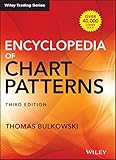
Sentiment: Bullish
Direction: Reversal or Continuation
What Is The Rounding Bottom Chart Pattern?
A Rounding Bottom pattern is a bullish reversal pattern, most commonly found at the bottom of a trend ahead of a reversal.
Rounded bottoms establish strong support by slowly grinding against it, creating a rounded pattern until price action reverses.
How To Identify The Rounding Bottom Pattern?
You can identify rounded bottoms better on larger timeframes like the daily or weekly scale.
A strong bearish trend is repelled by support, forming the left part of the pattern.
This is followed by a spread of the price action as it meanders around the support.
Finally, there’s more of an upward trend towards the end. The entire pattern forms a kind of “U” shape.
What Is The Psychology Behind The Chart Pattern?
The Rounding Bottom pattern, also known as a saucer bottom, is a bullish reversal chart pattern that signals the end of a downtrend and the beginning of an uptrend.
The pattern is characterized by a long-term decline in the price of an asset, followed by a gradual curve or “saucer shape” in the price that resembles a bowl or a “U” shape.
The rounding bottom can take weeks or even months to form, and traders interpret the pattern as a sign of a shift in market sentiment from bearish to bullish.
The psychology behind the rounding bottom pattern is that the gradual curve in the price represents a period of accumulation, where buyers are slowly entering the market and absorbing the selling pressure.
As the pattern continues to form, the buyers gain confidence, and the price begins to trend upwards.
Once the price breaks above the resistance level, it’s a signal that the downtrend has ended and a new uptrend has begun.
Traders may enter a long position once the price breaks above the resistance level, with a stop loss placed below the support level.
How To Trade The Rounding Bottom Pattern?
To trade the Rounding Bottom pattern, traders typically wait for the price to break above the resistance level with a strong volume surge.
The breakout should ideally occur on higher than average trading volume, as this confirms that there is significant buying pressure behind the move.
Traders may enter a long position once the price breaks above the resistance level, with a stop loss placed below the support level.
The profit target can be set based on the height of the rounding bottom, with the expectation that the price will move at least the same distance as the rounding bottom’s height in the direction of the breakout.
Alternatively, traders may wait for a pullback to the breakout level before entering a position.
This approach can provide a better risk-to-reward ratio, as the entry price is closer to the lower risk support level.
However, it may also result in missing out on some of the initial gains from the breakout. Ultimately, the best approach will depend on the trader’s risk tolerance, trading style, and market conditions.
It’s worth noting that the rounding bottom pattern can also result in a false breakout, where the price briefly breaks above the resistance level before reversing course.
Traders should be aware of this possibility. Also be sure to use technical indicators and other tools to confirm the validity of the breakout. Access these tools at TradingView.
Rounding Bottom Performance Expectations Explained
The trend in the right part of the “U” shape is expected to be more bullish when the neckline is broken.
To find potential targets, measure from neckline to the bottom of the “U” shape.
Project the measurement muliplied by 65% to the point of breakout. It’s worth noting that this target works best over longer timeframes.


